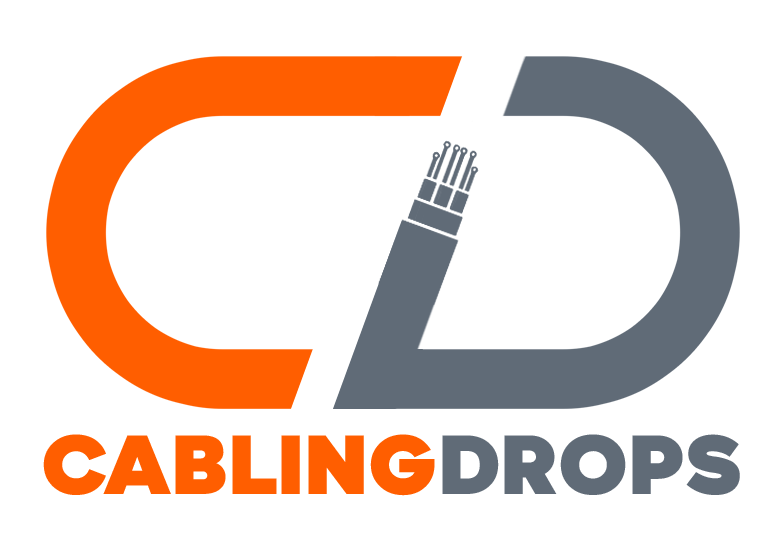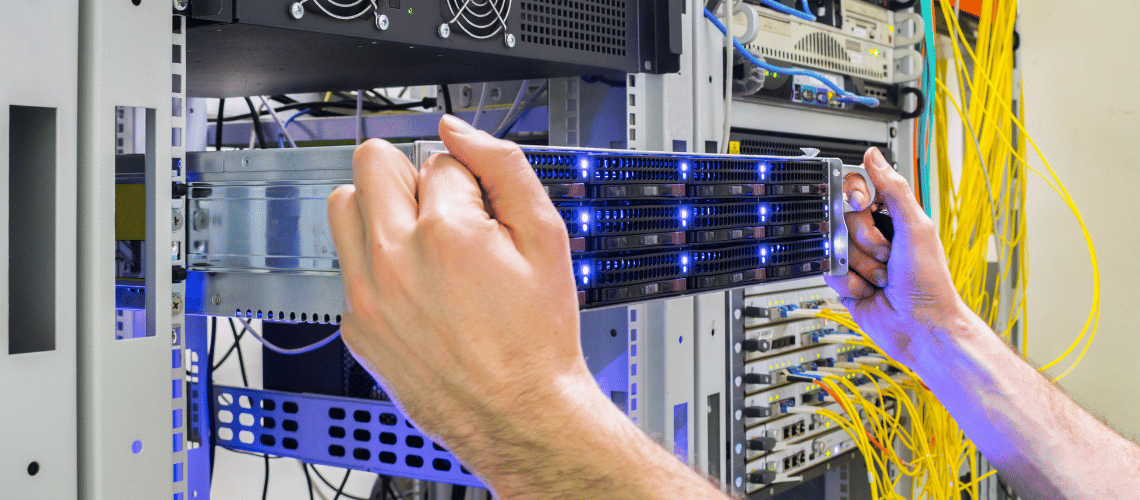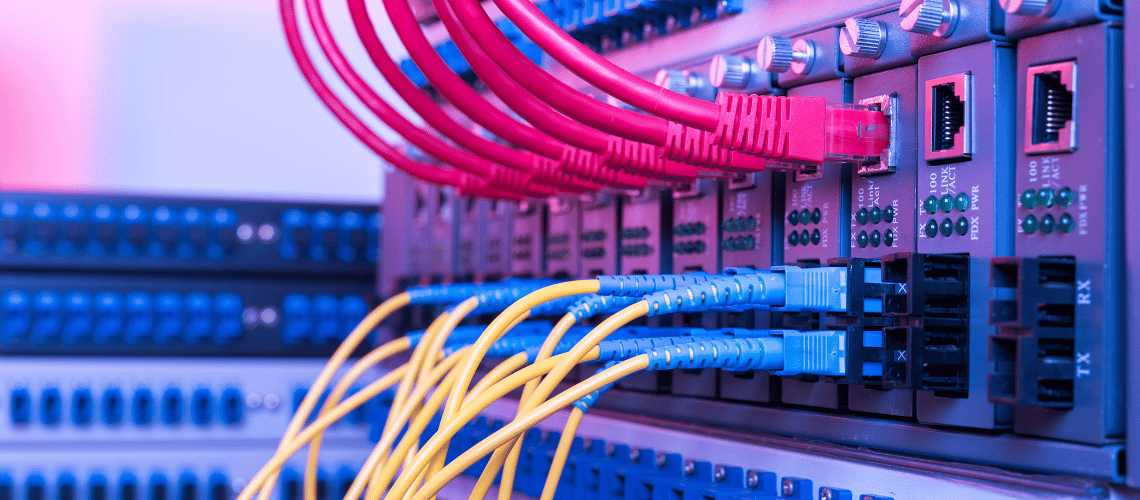
Safety is crucial during fiber optic installation due to the inherent risks involved. Strict regulation protocols and standards throughout the process are essential to mitigate these risks effectively. By prioritizing safety, the risk of accidents and injuries can be minimized, and the integrity and performance of the installed infrastructure can be protected, ensuring long-term reliability and functionality. Certified and experienced fiber optic installation companies are well-versed in adhering to these safety standards and rules due to their professional staff having relevant expertise, skill, and experience. Below, we will take a closer look at the most recommended guidelines for carrying out a safe and guarded optic installation.
Understanding Fiber Optic Installation
Understanding the installation of fiber optics is vital for creating and operating high-speed and reliable network communications. The fiber optic installation process consists of several important steps, starting with the site survey, then continuing with the cable routing and splicing, and finally ending with the termination. Site surveying will be crucial in finding the ideal sites for cable laying. This is followed by cable routing, which determines the route of fiber optic cables. It is imperative to install the fiber in a proper, clean way to avoid bending and maintain alignment. Comprehending such issues helps network engineers and technicians build networks that distribute traffic among links and nodes, reducing failures and delays from packets singing inconsistent routes.
Safety Precautions to Consider During Installation
This section entails all the safety precautions necessary during installation and how they contribute to overall well-being.
Wear protective gear
Protective equipment is very vital in fiber optic installation processes to cover the personnel wellbeing and to control risks associated with possible dangers. The installation of fiber optics frequently involves the use of specialized instruments, equipment and products, and also workplaces that may be infected with different kinds of hazards including physical or chemical ones. The use of protective gear is essential and helps the employees to have protection from flying debris, falls, cuts, abrasions, and chemical exposure. Moreover, safety gear including respirators and dust masks is used to ensure that the breathable air is not polluted with the dust, fumes or other particulates released during the process. By sticking with accurate security protocols and providing suitable safety gear, the installation staff may make the rate of accidents very slim, provide a safe work space and thus complete the fiber optic project successfully.
Some of the most commonly suggested protection equipment includes:
- Safety glasses
- Hard hat
- Gloves
- Safety boots
- High-visibility vest
- Dust mask
- Earplugs or ear muffs
- Safety harness
- Chemical-resistant apron
Disconnect power sources
Professionals recommend to disconnect supply of power while the fiber optic installation process is being followed in order to prevent the chances of electrical hazards and guarantee the safety of the involved personnel. Performing a work on or near live electric circuits may cause electric shock, burns, and even more severe injuries as a result. Disconnecting power sources not only removes the possibility of contact despite something being charged or functioning electrically but it also diminishes the chance of electricity happening. Furthermore, an unwanted power surge or a voltage fluctuation can also harm the private fiber optic systems if proper components are not used, leading to signal interference and affecting quality. By interrupting power sources, installation personnel will have a safer work environment, the risk of accidents is reduced significantly.
Discard all scraps carefully
Professionals recommend to disconnect supply of power while the fiber optic installation process is being followed in order to prevent the chances of electrical hazards and guarantee the safety of the involved personnel. Performing a work on or near live electric circuits may cause electric shock, burns, and even more severe injuries as a result. Disconnecting power sources not only removes the possibility of contact despite something being charged or functioning electrically but it also diminishes the chance of electricity happening. Furthermore, an unwanted power surge or a voltage fluctuation can also harm the private fiber optic systems if proper components are not used, leading to signal interference and affecting quality.
Avoid touching face or eyes
When handling fiber optics it is recommended not to touch the face or eyes during installation processes to keep yourself from exposure to toxic substances and to keep your hygiene. Installation for fiber optics usually involves cabling, connectors and tools that may attract dust, debris or chemical residue. Picking the face or eyes with dirty hands can create discomfort, contamination, or adherence of dirt or dust particles to the skin. In addition, the diameter of the fiber used in the optic cables is usually small and if the fiber happens to enter the eyes it is likely to result in discomfort or cause injury. Hence, ensuring not to touch eyes or face can serve as a way to safeguard health.
Adhere to regulatory standards
It is vital that the fiber optic installation procedures must be done following the rules and regulations so as to be in line with legal requirements and comply with the industry best practices. The regulatory standards describe the specific rules, codes, and regulations in terms of safety, environmental protection, and quality assurance that apply for the installation. Implementing such regulations will help installations activities to be carried out in such a way that safety and performance for deployed equipment are given due consideration. The failure to adhere to regulatory standards can lead to legal liability, penalties, project delays, and reputational harm. Therefore, standards regulations should be strictly followed to ensure the job is safe and environment-friendly.
Use adequate lighting
Appropriate lighting during the fiber optic installation processes is advised for several reasons. Proper lighting gets workers visibility on the spot enhancing work area assessment quality by identifying pain areas. Additionally, sufficient lighting reduces eye fatigue and strain which contribute to a safer and more efficient workplace. In environments where there is no adequate lighting, the chances of accidents and errors such as mistaking the cable routing or making wrong circuits go much higher. Implementing sufficient illumination is the key step towards higher efficiency, chances of mistakes reduction as well as adherence to high standards of quality and safety.
Keep food/beverage away from work area
Keeping the food and beverage far from the work zone during the fiber optic installation process is recommended generally to ensure cleanliness and prevent the contamination of devices and the materials. Installation areas of the fiber optic, where tiny cables, connectors, and elements may easily get damaged by food crumbs, spills, and liquid splashes. Similarly, food and drinks can attract pests like insects or rodents that, in turn, can create a danger for the equipment as well as the integrity of the cleanroom environment. By storing food and drinks far from the working area the chances of contamination and hazards are minimized and the quality of the installation process is secured with this.
Access Safe and Secure Fiber Optic Installation with Cabling Drops
Entrust Cabling Drops to help you upgrade your communication infrastructure with our expert fiber optic installation services. Our team delivers a high-ready implementation with the level of individualism. Transform your home/business connectivity with our best-in-class lightning-fast, reliable, and future-ready networking solutions for unmatched connectivity. Visit our website to learn more about how we can help you.
FAQs
Q. What are the main components involved in fiber optic installation?
The main components involved in fiber optic installation include:
- Cables and Connectors
- Splice Closures
- Patch Panels
- Transceivers
- Test Equipment
- Cable Management Accessories
- Installation Tools
Q. What safety precautions should be taken during fiber optic installation?
Some of the key safety measures to undertake during fibre optic installation include:
- Proper Training
- Personal Protective Equipment (PPE)
- Site Safety Assessment
- Safe Cable Handling
- Avoidance of Hazardous Materials
- Safe Work Practices
- Emergency Preparedness
Q. How does fiber optic installation differ from traditional copper wiring installation?
Fiber optic installation differs from traditional copper wiring installation primarily in the transmission medium and associated technologies used. Fiber optic installation involves the deployment of glass or plastic fibers to transmit data using light signals, offering higher bandwidth, immunity to electromagnetic interference, and longer transmission distances compared to copper wiring, which relies on electrical signals through metal conductors.
Q. What are some common challenges or obstacles encountered during fiber optic installation?
Some of the most common issues faced within the installation process include:
- Site Surveying
- Permitting and Regulatory Compliance
- Cable Routing
- Splicing and Termination
- Environmental Factors
- Safety Concerns
- Testing
Q. What steps should be taken to secure work areas and prevent unauthorized access to installation sites?
Securing work areas and preventing unauthorized access to installation sites during fiber optic installation can be done through the following steps.
- Control Access Points
- Implement Access Controls
- Communicate Hazards
- Provide Training and Briefings
- Monitor and Supervise
- Secure Equipment and Materials
- Coordinate with Authorities

